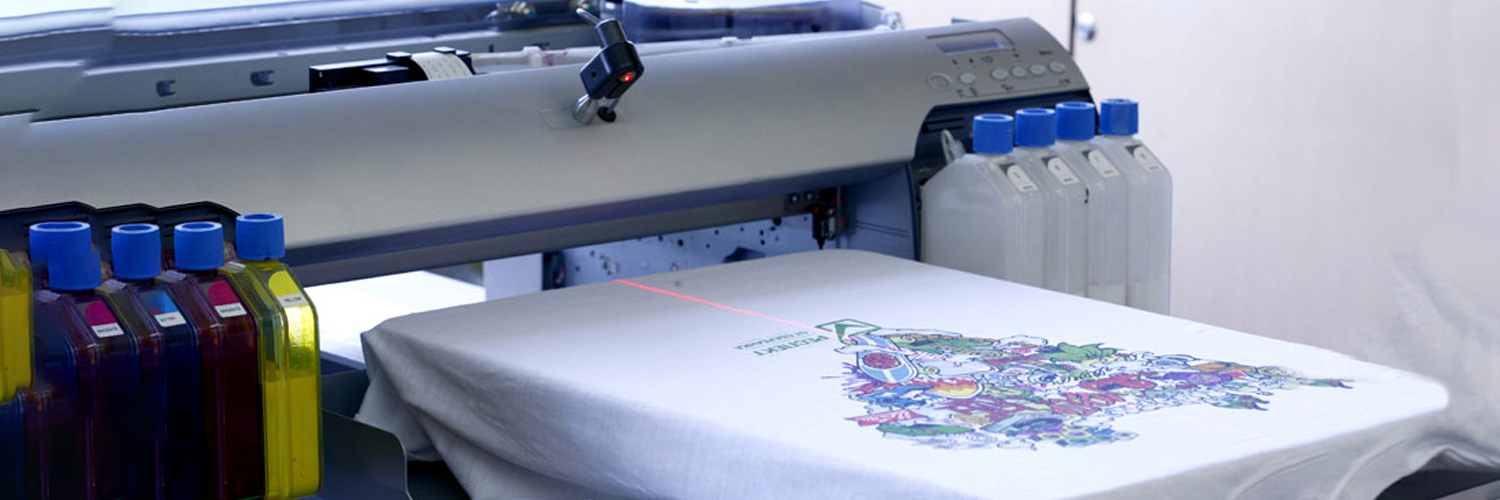Screen printing vs Digital printing
The fashion industry is constantly changing, and with new technology introduced every week, printing methods are increasing drastically. And not only printing methods but also fabric processing methods, techniques of fabric coloring, fabric dyeing and much more are changing in a blink of an eye. Well, the art of printing over clothes isn't new. It's been used since the late 900s and gained popularity with time. In the fashion industry, innovation is the new normal that leads to new combinations and methods of making a well-finished clothing line. Only a particular type of print looks good over a specific fabric.

Whether it's a plain or printed clothing line you are looking for, there are decisions you need to lock on before you start working on it. Choosing a printing method for your clothing line is one of the problematic processes you must go through to style the right way. Trust us; we have worked on various projects and seen it all when it comes to printing.
Screen printing vs Digital printing: Which one is best for you?

Both screen printing and Digital printing are two of the most common methods of printing that are widely used in the fashion and consumer products industries. Being a leading custom clothing manufacturer, we use both printing methods in our industry daily, and we can vouch that both ways are reliable, easy to work with and offer a good amount of customization. You might not be able to distinguish between both prints in the finished products, but there are still lot number of contrasts in the printing methods. To make the differences understandable, here is the blog that helps you determine the differences between both and help you decide which printing method is best for you. So let's dive in and discover:
A summary of the comparison
| Features | Screen printing | Digital printing |
|---|---|---|
| Quick Turn around | Yes | No |
| Fees to set up | Yes | No |
| Small batch Manufacturing | No | Yes |
| Large batch manufacturing | Yes | Yes |
| Color vibrancy | Yes | Yes |
| Complex and intricate results | Fair | Yes |
| Ink blending | No | Yes |
| UV resistance | No | Yes |
The Screen Printing

In simple words, the screen printing method, also known as the silk screen printing, is popular in the garment industry, which uses a stencil, mesh screen and ink to transfer the design over the fabric. Screen printing is a pretty much versatile method widely used in the industry, and it is used to print over different types of materials. Commonly used materials are clothes, garments, plastics, latex and polyvinyl products. In recent years, due to technological advancements, many features and felicities have been added to screen printing.
How screen printing works
-
Design preparation
-
Preparation Screen
-
The printing station
-
Applying the Ink
-
The printing process
-
Finishing
In simple words, the screen printing method, also known as the silk screen printing, is popular in the garment industry, which uses a stencil, mesh screen and ink to transfer the design over the fabric. Screen printing is a pretty much versatile method widely used in the industry, and it is used to print over different types of materials. Commonly used materials are clothes, garments, plastics, latex and polyvinyl products. In recent years, due to technological advancements, many features and felicities have been added to screen printing.
After the creation of the design, a separate screen is created that is detailed. The number of color decides the number of screens to be prepared; the more colors, the more screen will be added. This screen is tightly laid over the frame of a fine mesh. This screen mesh is made up of nylon or polyester material.
The next step is setting up the printing station, where all the necessary materials and equipment are aligned with the clothing project. The inks are filled in the printers, and the ink holders are placed and aligned properly to position the design properly.
Now that the inks, screen and design are aligned with proper positioning. Initially, to every screen, a single color is applied with the use of a squeegee that is further used to even the ink over the stencil (mesh screen). After that, the stencil is pushed across the screen to cover the design. The same procedure is repeated for different colours.
Here the printing process starts, where the materials the design needs to print, such as fabric, plastic, textiles, plastic or polymer product, are placed and aligned over the printing press. One by one, simultaneously, as per the order of color, the screen is pressed over the material.
Now all the screens are printed over the fabric, and the whole design is printed over the plastic product or textiles. The cloth is left to be dried out. The inks that are used in the making of the design need to be cured. Based on the type of ink used, there are different methods of curing the print, like heat curing. You can dry the design with an air dryer or chemical drying process.
Pros of Screen printing methods
-
Vibrant colors
-
Premium Feel With Durability
-
Flexibility over the fabrics
As the screen printing methods involve water-based inks and plastisol inks, these types are considered the best type of inks with vibrant results. On the other side, detail printing only offers CMYK colour printing. Screen printing allows the inks to match the exact colour and give the best possible results over the fabric.
The screen-printed designs tend to be more durable than the digital ones, as the production of screen printing designs is a bit lengthy and requires more effort, resulting in long-term durability. You will notice a vanishing of the design imprinted through digital printing, that too after a couple of washes from hot water. On the other hand, screen printing provides vibrancy and long-term color over the fabric.
With screen printing, you can choose from a wide range of fabrics. Any design with many colors can be easily printed over any fabric, soft materials, plastic, or poly vinyl product. Moreover, you can also add special effects with special ink over your fabric lines. These Specials designs include glows, sparkles, shadows, extra shine and a lot more creative designs.
Read in detail about screen printing and how it works here.
Digital printing

Digital printing is an advanced method of printing that is much less complex than screen printing. It's an automatic process where the computer uses digital files to extract design from it and place it over the printer using the software. There are two main categories of digital printing flatbed and roll printing. Digital printing or DTG (Direct to garment) is the talk of the town as it is more affordable and faster.
How digital printing works
-
Making of design
-
The design setup
-
Process of Printing
-
Drying of the print
The digital printing process starts with the design preparation process, and here the design is transferred over to the printer using the computer software. This software will scan the graphic design and save the design in a digital format that the software can read.
Here you need to align the printing material or fabric into the printer. Based on the printer there are different printers with different tray options, and you can align your product based on trays in printers. Additionally, you can set the core settings of your printers according to the print quality you are looking for. Through your printing, you can choose the color, quality of the print, and the type of paper or fabric.
Now you will have to transfer the digital file to the printer, and your printer must be wired or wired to your PC. Using its capabilities, your printer reads the design file in digital format. The digital printer uses advanced technologies like inkjet and laser to visualize the design of the selected fabric.
After alignment and setting, the design is set to print over the fabric. Your design will be successfully printed over the material. With an advanced printer, you can do advanced trimming, shaping and customization like fabric treatments, laminating and much more.
In the end, you need to dry or cure the print.
Pros of digital printing
-
Details
-
Quantity
-
Color blending
If you have a detailed design or a design with a photograph or detailed typography design, digital printing is one of the best options. Digital printing is better in terms of detail printing over the fabric.
One of the benefits of digital printing is that you don't need a large batch to process for effective production. You can start with as much lower as ten pieces per design as you get the same high-quality print.
Digital printing produces good results with intricate details, even in colour-blending designs. It becomes a bit complicated for prices in the screen printing to blend colors as there are different screens for each color. But in digital printing, you cut off 90% of manual work. At the same time, the ink is distributed equally and managed by all the printers.
What's best for you?
Well, it depends on what type of clothing line you aim to manufacture and your budget. Talking about financials, screen printing is the best option for you. If you want to print less number of designs, you can opt for digital printing in this case.
If you want a long-term, durable design with vibrant colors, then screen printing is one of your best options. Screen printing is one of the widely used methods in the industry. Also, the printing depends on the color that you are printing.